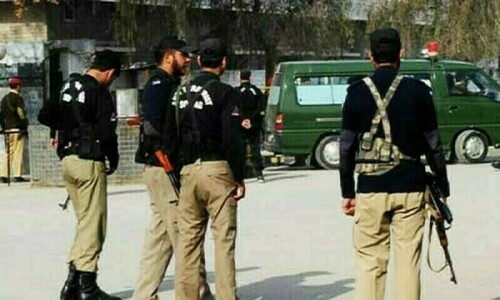SRINAGAR: In the months after the killing of rebel commander Burhan Wani in India-held Kashmir, there has been renewed popularity for what is being referred to as ‘new age’ militancy. Wani was a hero for the youth inclining towards freedom for Kashmir; the heroism brought to militancy by him has not died with his death — it has only intensified.
On the streets, squares, walls, buildings, roads — in short, everywhere — the name Burhan Wani resonates with the sentiment of dissent against India.
During the past few months of the uprising, young men in mainly southern Kashmir have been attracted to militancy. But, reportedly, militant outfits have been recruiting new boys cautiously, fearing an intrusion by government agencies. According to the official data reported by newspapers, 75 boys had gone missing within three months of the uprising, out of which 43 joined militants’ ranks, six returned to their homes while 26 others are still missing.
Read: I'll never forget the day Burhan Wani was killed
Since the killing of Wani, three new local militants have been killed in gunfights with government forces. The trio — Basit Rasool Dar, Waseem Ahmad Khanday and Rayees Ahmad Dar — had joined the militants after Wani’s killing during the uprising. Khanday was at his aunt’s place when he snatched a rifle from the guard of a former lawmaker’s personal security officer.
This has become the new technique of the militants’ recruitment policy. But only five weeks later, he was shot dead by the forces. The government is still not able to give full details about how many new young men may have picked up arms. But on the ground, with the killing of three of such men in just a few weeks, it appears that Wani’s killing has further intensified the armed rebellion.
During my recent visit to southern Kashmir, while speaking to young people at the funeral procession of Basit Rasool Dar, I could sense that the fear of dying by the bullet has vanished. Many young men, who were earlier only part of demonstrations, now see picking up the gun as the only solution. The reason given by them is this: whether people protest peacefully or violently, the government’s response has been the same — using maximum force to quell any kind of dissent.
Even the chief minister of Jammu and Kashmir, Mehbooba Mufti, accepted that “excessive force” was used against civilians. Speaking at a passing-out parade of police in southern Kashmir’s Awantipora, Mufti said: “The people of Kashmir suffered during the five months of unrest. There were a lot of casualties and hundreds of civilians and security men were injured. I have no hesitation in telling the truth that we had to use excessive force to secure life and property of the people of J&K.”
For militant outfits to get new, tech-savvy recruits, this element of force being used against them during the uprising has been a major reason. The only two major outfits currently operating in southern Kashmir, as made clear by their attacks and killings, are the Lashkar-e-Taiba (LeT) and the Hizbul Mujahideen. Both have been operating jointly in the region for some time now, as per the officials.
According to locals in southern Kashmir, Majid Zargar was one of the LeT’s powerful commanders in the area, who was shot dead on Dec 9 in a gunfight. Outside his home in Quimoh, Kulgam, after the funeral, a young boy in mourning told me that Zargar was one of the most successful commanders. “He used to teach militants how to snatch guns and then use them,” he said.
Twenty-three-year-old Zargar had been associated with the LeT for three years and had become a powerful personality within the young. With his death, young men in southern Kashmir believe that the path taken by boys like Zargar and Wani is the only solution, though it is the one that also leads to death.
However, as per the families of these militants, it is the continuous atmosphere of a bloodbath that has forced their children to choose this life. “One day he just left home and never returned,” said a childhood friend of Basit Rasool Dar in Bijbehara. “A day before, I had met him and I could sense he was going to go with the militants. Otherwise, he had a normal life, was going to be an engineer and came from a well-off family.”
Dar, a civil engineering student, was killed almost two months after he became a militant. His life’s last post on his Facebook timeline was on July 8, just after Burhan Wani’s killing. He wrote: “No, I can’t believe it.”
Perhaps this explains why Wani’s death only rejuvenated ‘new age’ militancy in Kashmir, and has inspired more young men, in the absence of any serious political dialogue on resolving the lingering Kashmir issue.
The writer is an independent journalist and the founding editor of The Kashmir Walla magazine.
Twitter:@pzfahad
Published in Dawn, December 23rd, 2016













































